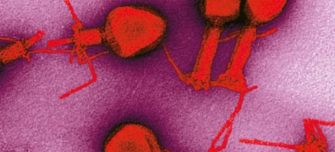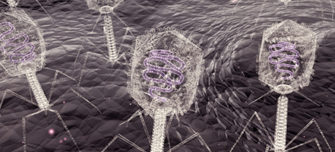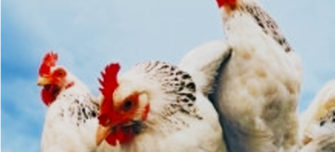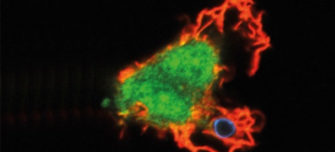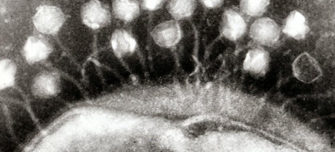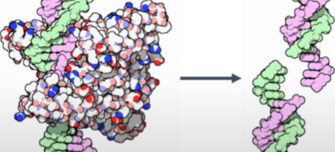Resources and further reading
-
Phage therapy
In this Microbiology Today article we explore how bacteriophages are considered the most abundant biological entities on Earth, and phage therapies in the past and future.
-
Bacteriophage: journal collection
This journal collection brings together Articles, Methods and Reviews relating to the diversity of bacteriophages and genomics-based research with a focus on their roles in the evolution of bacteria and ecosystems
-
Enzybiotics and phages: safe alternatives to antibiotics in the control of food safety
The concept of treating bacterial infections with phage is not new – indeed it pre-dates the antibiotic era. Can this be used to eliminate the use of antibiotics in animal feed?
-
Frederick William Twort: not just bacteriophage
The discovery of bacterial viruses, or bacteriophage, by Frederick William Twort was an important milestone in the history of microbiology. Now in this Microbiology Today article, we learn more about his research in more detail.
-
Bacteriophage therapy in livestock: food for thought?
In 2014, UK Prime Minister David Cameron commissioned a major review on antimicrobial resistance. The review, led by Jim O’Neill, aimed to “Analyse the global problem of rising drug resistance and propose concrete actions to tackle it internationally”. The findings of the review made for sober reading.
-
From peaches to patients: the many faces of cryptococci
Amongst the life-threatening fungal pathogens, Cryptococcus neoformans and its close relative Cryptococcus gattii account for almost 1 million infections per year and around 650,000 deaths. In this Microbiology Society article we explore cryptococci in more depth.
-
Microbial modulation of soil ecosystem processes
Soils are teaming with micro-organisms. Estimates vary from thousands to millions of microbial ‘species’ per gram of soil, with particle numbers including phages totalling more than astronomical objects in the universe. The application of modern sequencing technologies to biomes means we are beginning to know a lot more about what is present in soils.
-
Can we identify potential viral zoonoses before they cross the species barrier?
The toolkit for the identification of zoonotic viruses has evolved substantially over the last century, and in this Microbiology Today article, we discuss how next generation sequencing can be a powerful tool used to make a rapid diagnosis during an outbreak.
-
Giant phages and their impact on the gut microbiome
A team of researchers from University College London (UCL) are studying giant viruses and their direct impact on the composition of the gut microbiome.
-
The bacteriophage - bacteria’s worst enemy?
Bacteriophages are composed of proteins and a DNA or RNA genome that can be very simple, containing four genes, or complex, with hundreds of genes. The phages infect by injecting their genome into the bacteria which disrupts the bacteria’s normal replication cycle.
-
A regulatory protein linked to Acinetobacter baumannii virulence
Acinetobacter baumannii is an opportunistic pathogen that cause infections frequently difficult to treat with antibiotics. In this paper, the authors investigate an A. baumannii gene regulatory protein called AvnR.
-
Resistance is (not) futile: bacterial innate and adaptive immune system
Fleming Prize Winner, Professor Peter Fineran gives a talk on his research around phage resistance systems, specifically CRISPR-Cas and toxin-antitoxin/abortive infection systems.
-
Jam Talks: phage and the gut microbiome
In this blog, researcher Eleanor Townsend tells us more about the history of phage and how she has started looking at using phage to eliminate unwanted bacteria in the gut microbiome.
-
Sensitisation of Clostridoides difficile to phage infection
Annie Clarke, a student from the University of Hertfordshire, shares insights from her research which focuses on determining whether phage sensitivity; the ability of a bacteria infecting virus to infect a bacterium, is transferrable in Clostridoides difficile between different strains.
-
Microbiology Editor's Choice: How does MRSA adapt to survive within a cell?
Each month, a manuscript published in our flagship journal Microbiology is chosen by a member of the Editorial Board. This month, the paper is titled 'Staphylococcus aureus adaptation to aerobic low-redox-potential environments: implications for an intracellular lifestyle,' and was chosen by Professor Gail Preston.
Image credits:
Digital Vision / Thinkstock
Omikron/Science Photo Library
iStock/Design Cells
iStock/ClaudioVentrella
Peter Fineran
Eye of Science/Science Photo Library
Paula Seoane, Rafael Schneider and Robin C. May
iStock/Tetiana Lazunova
Dr Salvatore Andrea Gazze
Reproduced courtesy A. E. P. Twort

